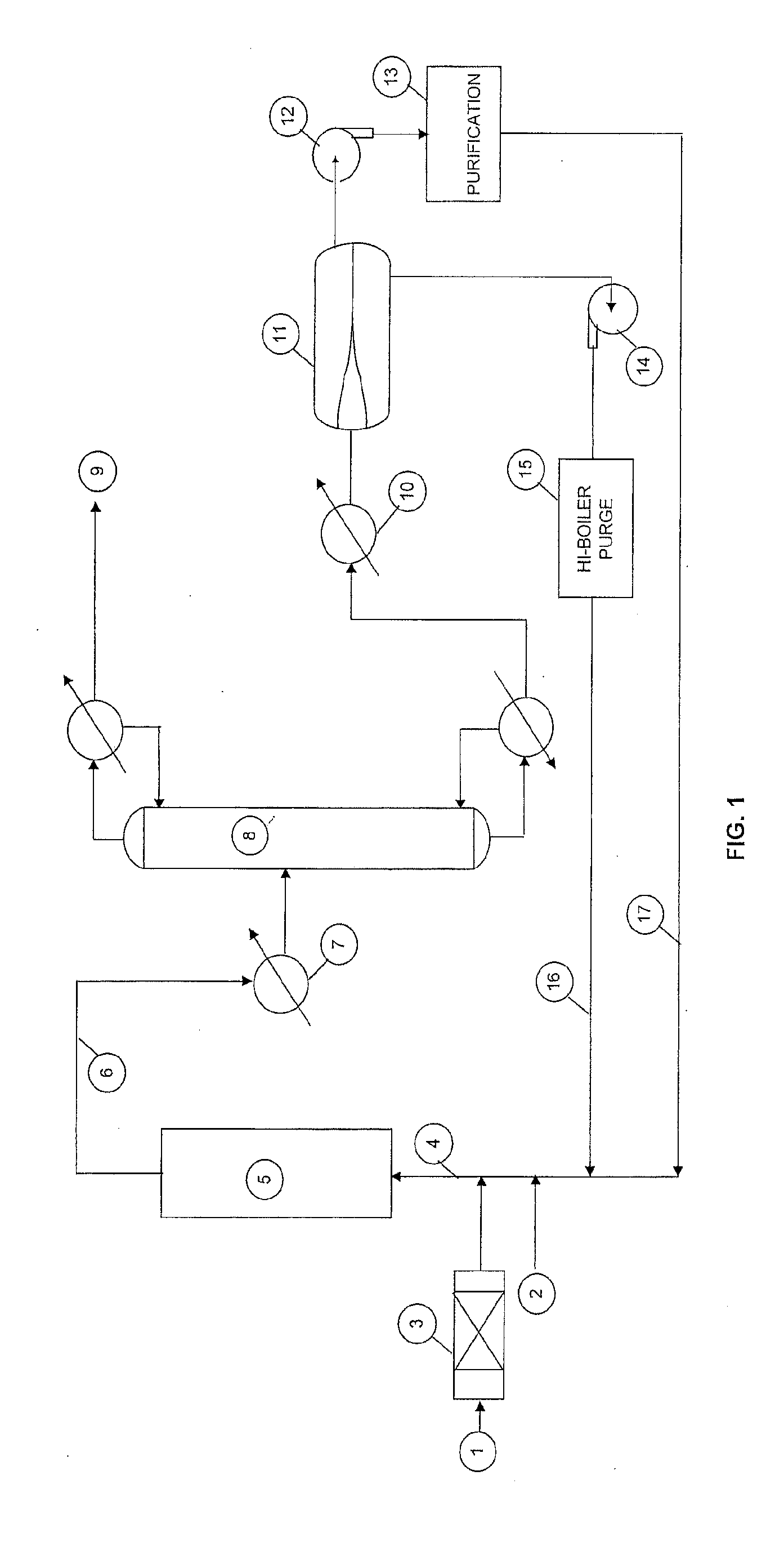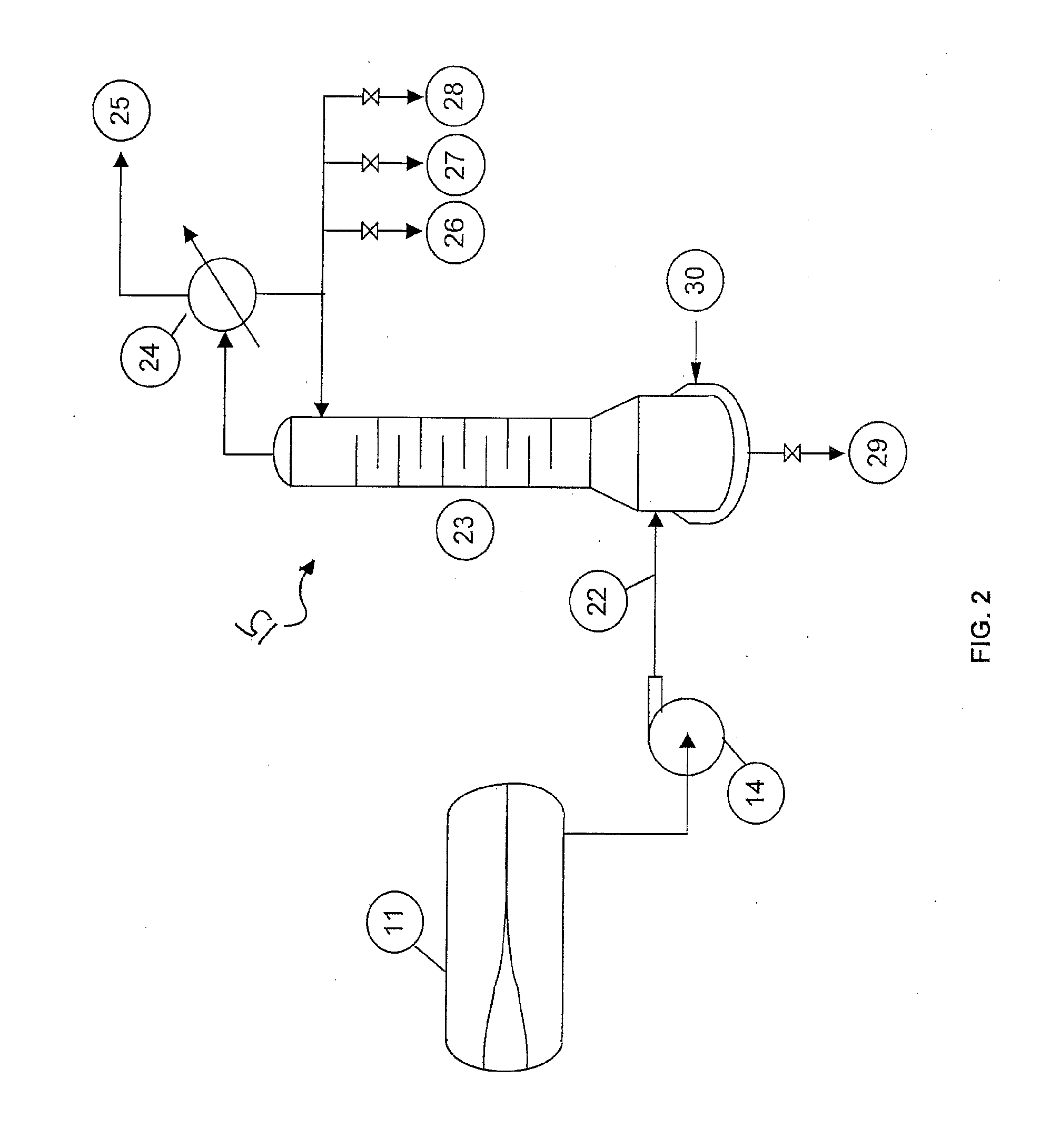Process for producing 2,3,3,3-tetrafluoropropene
- Summary
- Abstract
- Description
- Claims
- Application Information
AI Technical Summary
Benefits of technology
Problems solved by technology
Method used
Image
Examples
example 1
[0046]The pilot demonstration unit is composed of feed delivery system, vaporizer, reactor / heating system, distillation column, phase separator, recycle system, caustic solution scrubber, and product (1233xf) collection system. During start-up, organic feed containing 10 weight % 1233xf and 90 weight % 1230xa was passed through a drying column and combined with HF feed before entering vaporizer. The vaporized vapor mixture was then introduced into reactor, which was charged with 6.5 L of fluorinated chromium oxide catalyst. The reaction temperature and pressure were 200° C. and 70 psig, respectively. The reactor effluent was directed to a cooler operated at −30 ° C. before entering a distillation column operated at 60 psig. The effluent from the top of the distillation column (1233xf, HC1, and HF, and 244bb / 245cb (if any)) was passed through a scrubber, drying column and then to a Product Collection Cylinder (PCC).The effluent from the bottom of the distillation column (mainly HF, u...
example 2
[0047]The same pilot demonstration unit was used as in Example 1. HF recycle was initiated by pumping the liquid of HF-rich layer through the dip tube of phase separator. The analysis of reactor effluent showed no 1230xa was detected after 1000 hours on stream, indicating no deactivation occurred during this period of time.
PUM
| Property | Measurement | Unit |
|---|---|---|
| Time | aaaaa | aaaaa |
Abstract
Description
Claims
Application Information
 Login to View More
Login to View More - R&D
- Intellectual Property
- Life Sciences
- Materials
- Tech Scout
- Unparalleled Data Quality
- Higher Quality Content
- 60% Fewer Hallucinations
Browse by: Latest US Patents, China's latest patents, Technical Efficacy Thesaurus, Application Domain, Technology Topic, Popular Technical Reports.
© 2025 PatSnap. All rights reserved.Legal|Privacy policy|Modern Slavery Act Transparency Statement|Sitemap|About US| Contact US: help@patsnap.com


